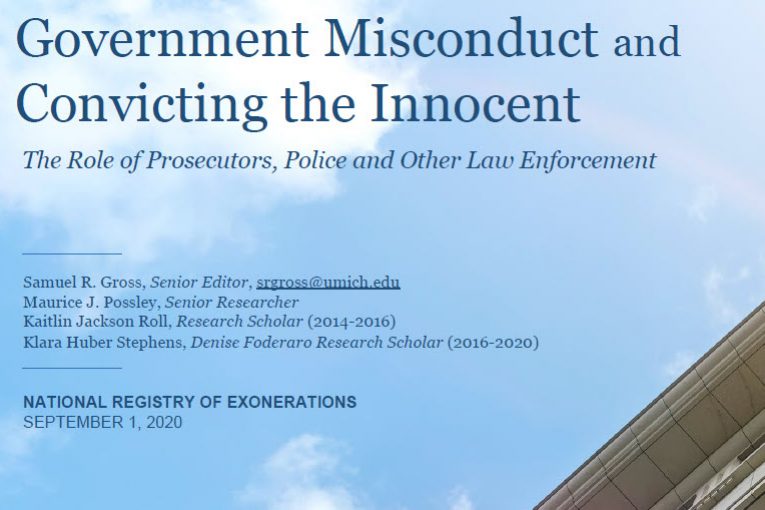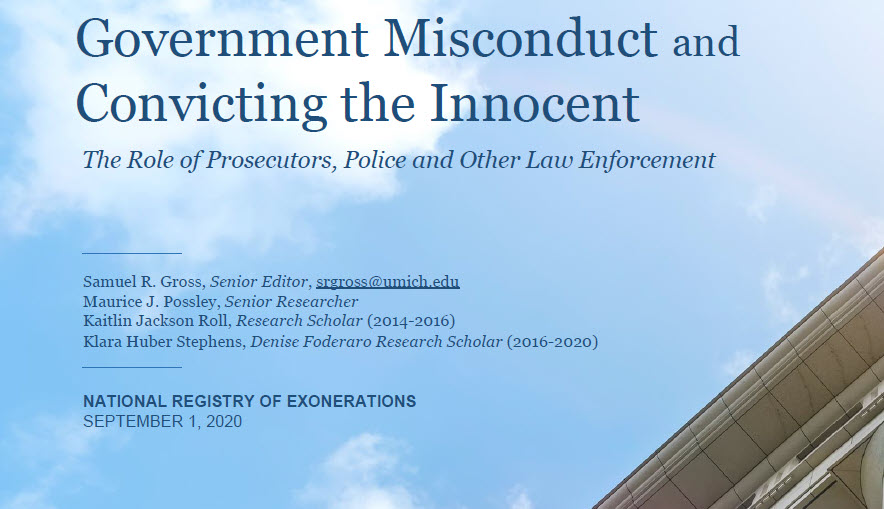

By Kelsea Valerio
(This is the fifth in an 11-part series by The Vanguard reporting on a study of exonerations produced by Samuel R. Gross, Maurice J. Possley, Kaitlyn J. Roll, and Klara H. Stephens)
Conducting a criminal trial depends heavily on law enforcement officers as primary sources, through written reports or verbal testimonies – but perjury often plays a large part in wrongful convictions of the innocent, according to research by Samuel R. Gross, Maurice J. Possley, Kaitlyn J. Roll, and Klara H. Stephens.
The researchers note tht in almost 10 percent of exonerations, law enforcement officials were found to have lied about their personal observations, while about three percent intentionally planted fake evidence or knowingly withheld potentially vindicating evidence.
In the majority of cases with fabricated evidence, forensic analysts wittingly asserted that the defendant’s hair matched that found on the crime scene, but it was later revealed to be entirely fabricated.
Samuel R. Gross, Maurice J. Possley, Kaitlyn J. Roll, and Klara H. Stephens found examples of fabricated evidence include blood, semen, or fingerprint discrepancies.
For instance, a 1988 Chicago rape and murder case resulted in the conviction of four teenage boys because forensic analyst Pamela Fish falsely testified that the semen found on the victim’s clothes  could potentially match three of the four defendants.
could potentially match three of the four defendants.
However, the fact of the matter was that Fish knew from concealed blood tests that the semen could not have come from any of the defendants. After multiple instances of making false statements were discovered, Fish was later dismissed from forensic analysis by the Illinois State Police.
The planting of evidence by police officers is a shameful failure to fulfill one’s civil duties. Such instances of egregious behavior usually consisted of planting illegal substances on innocent individuals. One related example is that of Maurice James, according to the report by Samuel R. Gross, Maurice J. Possley, Kaitlyn J. Roll, and Klara H. Stephens.
A law enforcement officer testified that a $20 bill found on the defendant was supposedly marked and traced back to the use of procuring drugs. As a result, James was convicted of a crime he did not commit. After two years of being incarcerated, James was only acquitted when the officer’s pattern of corruption was uncovered and he blatantly admitted to planting the $20 bill himself.
Gross et. al. makes a salient point in delineating just how difficult it is to prove that false evidence has been planted, noting that potential contributing factors for planting evidence by law enforcement include assuming a guise of control over areas where illegal drug distribution is most prevalent by arresting individuals with fake evidence or even framing individuals for selling illegal substances when the officers themselves are in reality selling seized drugs.
Furthermore, finding out the truth about smaller details, such as, whether or not an officer is lying about where he found a weapon or the exact quantity of drugs, is nearly impossible to trace.
In the 1970 case of Malcolm Emory, the student at Northeastern University walked by an anti-Vietnam war protest as he was headed back to his dorm from the library. An officer testified that he was assaulted by Emory, who the officer said was holding a brick and a concrete block in each hand.
Emory was convicted. He was lucky enough to discover an unpublished photo from a newspaper that depicted himself being thrown to the ground by law enforcement, holding multiple textbooks, not bricks or concrete blocks. He was exonerated 20 years after his conviction.
Gross et. al. found that false confessions are present in 12 percent of exonerations in the Registry. Evidently, instances where defendants confess to crimes they did not commit and were fabricated by police officers were never able to be verified because they were never recorded to begin with.
Sometimes, individuals signed confessions without full knowledge of doing so due to a language barrier or because of threat of violence from law enforcement.
The researchers said 70 percent of instances with forged confessions were found to have included the threat of or actual physical violence.
Gross et. al. conclusively documented that out of the 2,400 exoneration cases studied, one quarter of these convictions were found to be a result of distorted and, in some cases, entirely fictitious evidence.
Such misconduct is difficult to detect, but is telling of the corruption that exists within the criminal justice system.
To sign up for our new newsletter – Everyday Injustice – https://tinyurl.com/yyultcf9
Support our work – to become a sustaining at $5 – $10- $25 per month hit the link:





